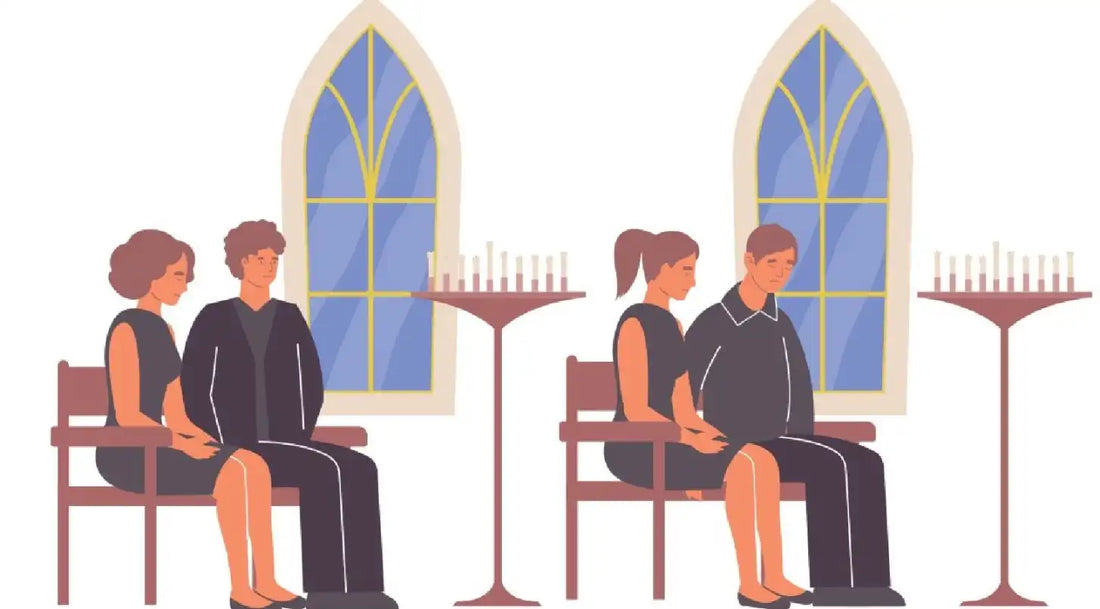Most people find deciding between attending a visitation or a wake is tricky. Others continue to confuse the two terms. So, what is a visitation? What is a wake?
What Is A Wake?
The wake is a funerary practice that is held at the funeral home of the family of the deceased. It is a way of paying respect to the deceased person. Friends, family and well-wishers visit the family’s house, offering them bereavement. In some customs, a cleansing ritual is performed with the family present beside the deceased's body. Wakes vary from culture to culture. Hence, this description must be read as a generalized outline of what a wake is. The funerary customs often involve interaction around the deceased's body— whether it is telling stories or giving speeches.
What Is A Visitation?
The word “visitation” is often used interchangeably with a wake in the United States. However, you must note that they have overarching differences. The most crucial of these is that the deceased's body is not present in most cases. If the body happens to be present, it is inside a casket. Another stark difference is where the visitation takes place. Visits typically happen at a funeral home or a place of worship. Similar to a wake, it is an informal occasion, performed before the funeral. In some cases, a visitation may also be included as a part of the funeral service. People may attend the visitation instead of attending the funeral. Like a wake, there may be prayers, story-telling and speeches. The grieving family may also offer food and refreshments to those attending.
How Do Wakes Vary From Visitations?
To make an informed choice about whether to attend a wake or a visitation, you must consider the key differences between the two.
- As mentioned earlier, the most significant difference between the two is the presence and absence of the body. The body is always present at the wake but not always at the visitation. If you wish to pay respect to the deceased's body, then attending the wake is the way to go. However, if you want to make your attendance about supporting the family of the deceased and celebrating the life of the deceased in spirit, then visitation is what you must opt for.
- They differ in their time of origin. The wake is an older exercise that dates back to the early days of Anglo-Saxon Christianity. The wake once translated to a vigil for the deceased's body before they were buried. This practice continues to be popular in Britain and Ireland. Visitations are of North American origin and funerary customs. It is a community gathering meant to comfort the family. It was once a gathering at the home of the deceased. Today, it is organized at their place of worship or at a funeral home. Opt for the visitation if you are keen on sticking to American tradition. If you are looking to follow a practice that has a lengthy history, the wake is a better choice for you to attend.
- A wake and a visitation have different timings. In today’s context, there is greater flexibility when it comes to funeral arrangements. But many families prefer to adhere to traditional timings. The wake follows the death of your loved one. Visitation usually refers to a designated period or hours when friends, family, and acquaintances are invited to pay their respects to the deceased and offer condolences to the family. Traditionally, the wake is scheduled to occur on the first few days after the death. Since bodies were not preserved with embalming before the 19th century, this was a practice then and continues to be one by default today. You may opt for such a visitation if you want to say your final goodbye to the body with close friends and the family of the deceased right after passing. Since visitations happen right before the funeral, they may be a more straightforward exercise for you to attend the funeral and offer your respects before. Since it may be clubbed with the funeral, you may be able to participate in both on the same day.
- A visitation occurs outside the deceased's house and at a place of worship or the funeral home. If you wish to be in the presence of a priest and around a religious or spiritual presence, this is what you must opt for. You may be interested in being present in an environment full of family and well-wishers, where there is an air of emotion and comfort. In this case, you can opt for visitation.
- A wake may last some days or even a couple of hours. A visitation is short, lasting between half an hour to a few hours. Depending on the time you are willing and able to commit, you can make the appropriate choice.
- Wakes are seemingly more personal than visitations. This is because wakes are meant for close friends and families, in particular. On the other hand, visitations are open to all funerary guests. Depending on your relationship with the deceased and their family, you may make your choice.
Plan Your Farewell with Grace – Our Pre-Planned Caskets Offer Peace of Mind
Should You Go To Both Visitation and Funeral?
After reading about both the wake and the visitation, you may have a more precise answer on which of the two you would select. If you were close to the deceased or their family, attending both events can offer comfort and support to the grieving family, allowing you to express condolences, share memories, and show solidarity during a difficult time. In many cultures and religions, attending both the visitation and the funeral is customary and considered a respectful way to honor the deceased and support the family. Attending both or either of them is a personal choice you are left to make.
In the United States, people use the words wake and visitation, interchangeably. While their similarities may warrant this up to a certain extent, you must be made aware of where they differ.

![Upgrade to Premium Weight [18-gauge steel]](http://titancasket.com/cdn/shop/products/casketthicknesswithnumbers.png?v=1680642906&width=533)









